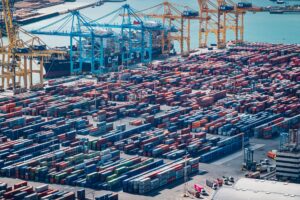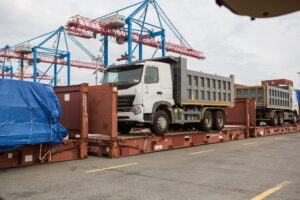Over the last year, the U.S. inflation rates rose by nearly 8.3%, making a 40-year high. Even more surprising is that the inflation rates continue to increase as supply chain stresses alleviate. In the past few years, there have been constant news reports of supply chain bottlenecks and congestion slowing cargo movement. A supply chain pressure indicator was recently developed to track the duration it takes cargo to reach U.S. terminal gates from China. The marker found that days went down to 86 days on 9/25/2022 from 113 days on 1/23/2022. Supply chain pressures slowing down were also believed to reduce inflation; however, this was not the case.
The beginning of the inflation happened when COVID began making its way globally. A surge in customer demand and labor shortages created backlogs which caused the shipping cost to go up. Add to this a war in Ukraine, and the prices of everyday goods skyrocketed to alarming levels. The Federal Reserve Bank of New York recently designed the Global Supply Chain Pressure Index (GSCPI) barometer. This barometer was another indicator of supply chain pressures starting in January 2021. The findings were that GSCPI plunged 66% percent from its peak in December 2021, while inflation went up 17% from the same month.
Is The Inflation Temporary?
The current rise in inflation has many concerned about what the future holds. Although there is no definite answer to how long it will last, some inflation is ideal. This is because a steady price increase can help boost business activity. More dollars can lead to more lavish spending, which may also grow demand. A problem arises when inflation surpasses the target rate, which in the U.S.’s case, is 2%.
Various economists forecast that the earliest inflation may reach the target rate of 2% in the U.S. is in 2024. Other economists believe that U.S. inflation could stay at 3% or 4% for decades leading to several recessions. Inflation may be a global crisis, with other countries facing the highest price increases in decades. Some countries are facing hyperinflation, with Turkey reaching an 80% high in June while Argentina currently has a 70% high.
Why are Supply Chain Pressures Easing?
As supply chain stresses decrease, one belief is that we are returning to normality from the last few years. The stresses like COVID and congestion could slow down; however, we are still above pre-COVID levels. Another rationale behind the ease of pressure is that the U.S. is entering a recession. The decrease in demand to purchase and move goods internationally may indicate this.
Whether the inflation is temporary or long-term, goods still must be moved internationally. Although the supply chain pressures have eased, the crunch is not over, and the shipper should still take caution. A1 Worldwide Logistics is a trusted freight forwarding, customs brokerage and, warehousing company experienced in all aspects of supply chains. We understand the world of international shipping and are prepared to guide clients through any difficulties. If you plan on importing or exporting a shipment to and from the U.S., contact us at 305-821-8995.





